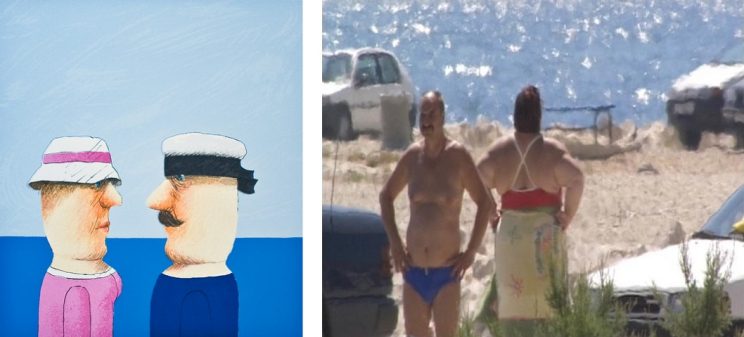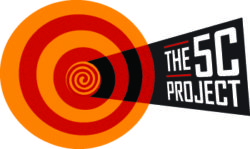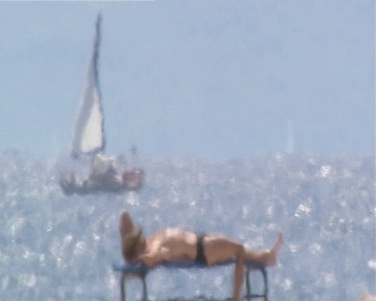There is a special quality that only short films can attain, and that very few of them do. It doesn’t mean the rest of them are bad – though it does mean that those who do are good. For lack of a better term I’ll name this quality conceptualization and place it at a crossroads with brevity: it is a film that manages to say plenty with a minimal display of energy; one simple idea, a little push from the artist, and then this idea starts spinning and delivering new meanings that fall back and enforce the initial concept, and so forth.
One such film is Boris Poljak‘s Splitski Akvarel (The Split Watercolour, 2009). An award winning DOP, Boris Poljak had the idea to shoot unsuspecting beach goers with a powerful telephoto lens. Shooting over such long distances in the heat of Split enables the camera to capture heatwaves rising up from the ground. It all starts and comes back to these heatwaves, and the fruits of this technical gimmick are many.
First, you can start a discussion about the nature of cinema as art. There are those who say the essence of cinema stems from it’s capacity to reveal reality as it is (and make us see “more” when watching a recording of reality then when looking directly at reality). And then, there are those who say that art comes, on the contrary, from the imperfection of the photography, the inability of the camera to record a perfect image of reality (for instance in the old days of silent films in black and white, the art was that portion of reality that was missing from the picture: the color and the sound). The Split Watercolour would stand right in the middle of this endless debate. This is pure reality, it’s not even staged, and the heatwaves are real, something that the human eye would also see. At the same time though, it would be impossible for the human eye to distinguish something other from the heatwaves at this distance.
The end result of this technique (long distance, hot environment) can be related to that of tilt photography, that makes people and places look like Lego miniatures. In The Split Watercolour the characters look like cartoons and the images resemble paintings. The title say it all, and you can draw similarities between the frames of this film and pointillism for example. When watching it my mind immediately went to Norman Rockwell, with his funny and loveable characters, the postcard drawing style and subject of his illustrations and their naive-optimistic vision on life. Boris Poljak said in an interview that he was thinking of a specific kind of paintings done by Vasko Lipovac (also a native of Split) and I can see the point there: the simple setting (a subject or two in a minimalist context), the robust and round characters and the dominant shades of blue can all be found on Split’s inexpensive beaches (this is the author’s choice of course, we can imagine different kinds of bodies on a beach for the young, rich and fit).

There is little editing in the film in terms of creating narratives that last for more than one shot. And because of the subject nature – people lying on the beach tend to… well, just lie there – there is an interesting stillness effect and a lack of movement in this “moving picture” that clashes with the mesmerizing movement of the hot air rising from the earth. Watercolour is not just the visual style but also the medium, a painting done on a flat surface (the film also uses a square framing, something you would see in a museum and less on a film theater screen). The heatwaves, the great distance from the camera to the subject and the encompassing blue (sea and sky), all contribute to a lack of perspective, a flattening of every element of the image onto a two-dimensional canvas.
And of course, the moving aspect is just an illusion that feeds on a flaw of the human eye, and again we can circle endlessly around the big question: what is cinema? According to some academics that tried to merge film theory with psychoanalysis a few decades ago, watching a film in a dark theater is no less than voyeurism (in this imagery the light falling on the screen would become the keyhole). This is precisely what’s going on in The Split Watercolour, or you could just call it the purest form of observational documentary. And isn’t this what people do at the beach anyway, look at other people? And while doing this they also stand and pose for the sun, the skin is the celluloid, the tan is the developed piece of art.

